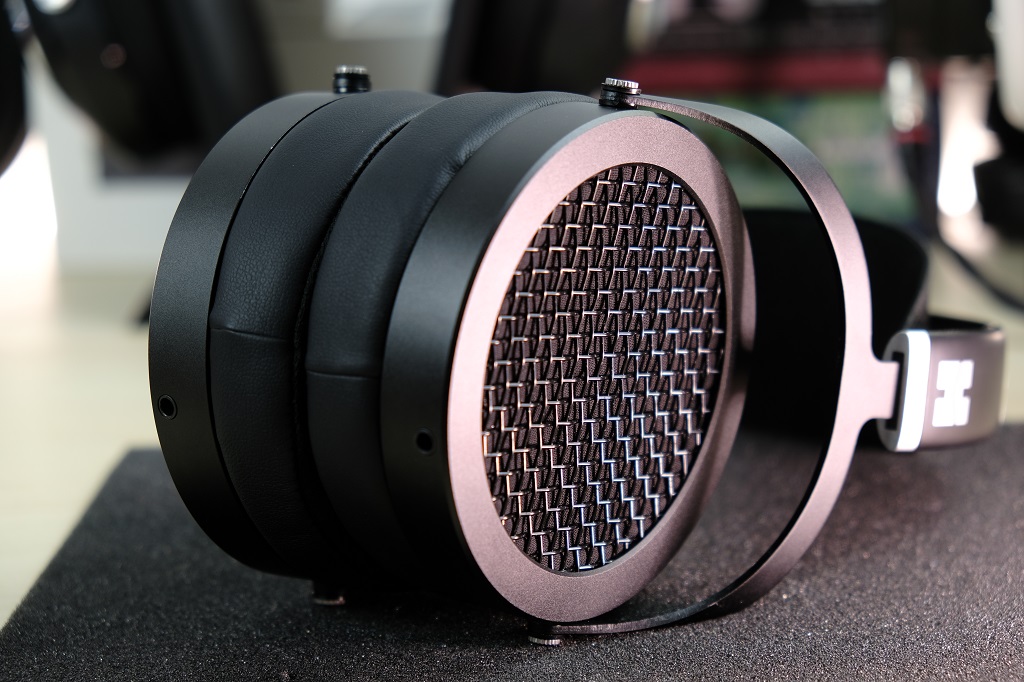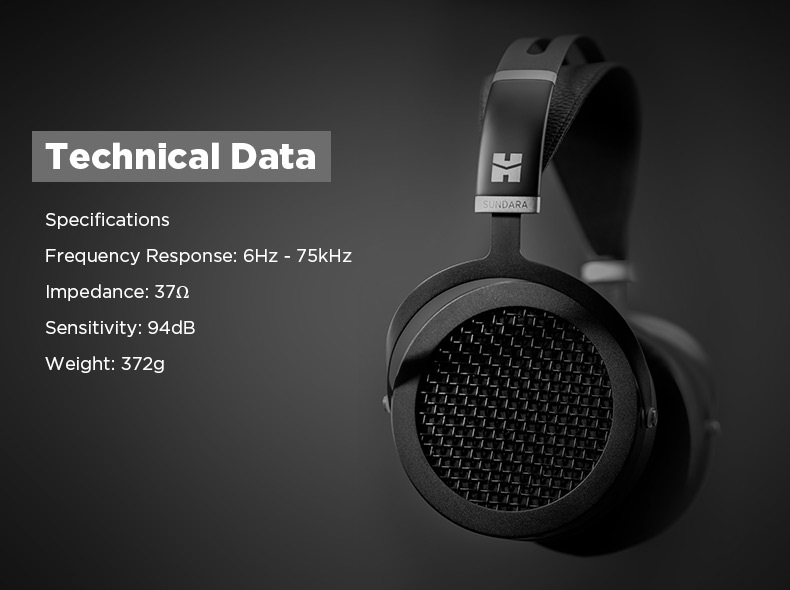Introduction
For this review I was fortunate enough to be selected by HiFiMAN to be on the head-fi loaner tour for the Sundara. I had previously been a bit disappointed with this 'upper mid-fi' price category, having reviewed the Beyerydnamic DT-1990 pro, and realizing that a lot of the praise it's been getting is sorely unwarranted. People seem to be fooled into thinking that its 8.5khz treble peak equates to detail, when in reality it's just an overexposed and oversharpened image. Now onto HiFiMAN's offering in this category:
While I was a big fan of the HE500, the newer generation (560 and 400i) didn't grab me as much. They're still capable performers, but for some reason they always sounded a bit boring by comparison. Add to that the fact that they had some serious build quality issues with cups falling off (I had one literally fall apart in my hands in a headphone shop), it hasn't been a good look. Now comes the Sundara - a better built, more streamlined replacement for HiFiMAN's entry level audiophile planar magnetics.

Build quality & comfort
The build seems to have been improved when it comes to the physical construction of the headphone, with the exception of a cheap and plasticky headpiece adjustment system. But this time around, the yokes are thankfully made of metal, and are all one piece so they're unlikely to fall apart like their predecessors did. The downside of doing this is that this system doesn't allow for any cup swivel. In my opinion this is completely inexcusable, and this is perhaps my biggest complaint when it comes to the Sundara. Nonetheless, it's still reasonably comfortable once you get used to the clamp, and the pads feel quite good.
Performance
Detail retrieval and speed are both exceptional for this price. It's not as good as some kilobuck cans I've got on my desk at the moment, but boy does it ever get close at a fraction of the price. The Sundara does a better job in this department than the DT-1990 pro, and it also does better than the HD660s from Sennheiser - at least as far as speed is concerned.
Soundstage is good, but not the widest I've ever heard - certainly wider than the HD660s. It also has a good sense of depth and layering. The real standout here though is imaging and instrument separation. The Sundara is simply categorically superior to the two aforementioned upper mid-fi dynamic headphones, and this is partially why I regard it so highly in terms of detail capabilities as well.
Of course, it also has that distinct planar timbre that isn't for everyone. Personally I love it, because it makes things sound punchy, tight, and well controlled. I like to describe this as sounding like tones are plucked rather than pushed. The nice thing about the Sundara is that it doesn't sound overly thick or closed in, and that's also partially due to its tonality.

Tonality
Bass - The bass rolls off a bit below 50hz, but this can also be improved by ensuring you get a good seal. I found my measurements shifted quite a bit in that region depending on how I positioned the headphone, and it sounds like that too. Nonetheless, the bass is tight and well controlled, likely aided by the planar driver - and while it's not as linear as I'd like, it's still satisfying.
Mids - This is possibly the flattest response up until the upper midrange where there's a slight elevation. I find this causes a very slight shout, but it's tastefully done and I can't say it ever becomes bothersome. Similarly, the ear canal compensation around 3khz isn't overly subdued, which really helps with clarity and presence.
Treble - The Sundara has some of the best treble response under $1000. There are a few other headphones that do about as well (like the Ananda), but at the Sundara's asking price it's actually insane how well it does in the treble. Because of this, the Sundara is a statement on what good treble response should be - and in this sense the Sundara is the perfect reaction to the "fake detail" headphones like the DT-1990 pro that oversharpen images and fool reviewers. On the flip side, there are headphones that seem to have been developed with the idea of just reducing treble altogether to avoid having to deal with it being overly sharp, and that's not good either. The Sundara demonstrates what's possible with treble when it's tuned just right, and it underscores the importance of how carefully treble needs to be tuned to get it right. If anything, this is the Sundara's crowning achievement.
Conclusion
In a world where everyone is either oversharpening or muting the treble, the Sundara navigates the perfect middle ground, showing what good treble actually is. It's not perfect in its design, but at less than $400 the Sundara is an absolute steal. I can't think of anything better for the price, at least for the moment. Moreover, this is such a benchmark headphone that other manufacturers need to use this as their target if they intend to sell a product at the same price or higher, especially when it comes to treble response. In fact, this does tre ble better than some headphones that cost thousands, and so anyone looking for a definitive statement on treble, they wouldn't go wrong with the Sundara.
If anyone's curious, I made a video review you can check out as well for more info.
For this review I was fortunate enough to be selected by HiFiMAN to be on the head-fi loaner tour for the Sundara. I had previously been a bit disappointed with this 'upper mid-fi' price category, having reviewed the Beyerydnamic DT-1990 pro, and realizing that a lot of the praise it's been getting is sorely unwarranted. People seem to be fooled into thinking that its 8.5khz treble peak equates to detail, when in reality it's just an overexposed and oversharpened image. Now onto HiFiMAN's offering in this category:
While I was a big fan of the HE500, the newer generation (560 and 400i) didn't grab me as much. They're still capable performers, but for some reason they always sounded a bit boring by comparison. Add to that the fact that they had some serious build quality issues with cups falling off (I had one literally fall apart in my hands in a headphone shop), it hasn't been a good look. Now comes the Sundara - a better built, more streamlined replacement for HiFiMAN's entry level audiophile planar magnetics.

Build quality & comfort
The build seems to have been improved when it comes to the physical construction of the headphone, with the exception of a cheap and plasticky headpiece adjustment system. But this time around, the yokes are thankfully made of metal, and are all one piece so they're unlikely to fall apart like their predecessors did. The downside of doing this is that this system doesn't allow for any cup swivel. In my opinion this is completely inexcusable, and this is perhaps my biggest complaint when it comes to the Sundara. Nonetheless, it's still reasonably comfortable once you get used to the clamp, and the pads feel quite good.
Performance
Detail retrieval and speed are both exceptional for this price. It's not as good as some kilobuck cans I've got on my desk at the moment, but boy does it ever get close at a fraction of the price. The Sundara does a better job in this department than the DT-1990 pro, and it also does better than the HD660s from Sennheiser - at least as far as speed is concerned.
Soundstage is good, but not the widest I've ever heard - certainly wider than the HD660s. It also has a good sense of depth and layering. The real standout here though is imaging and instrument separation. The Sundara is simply categorically superior to the two aforementioned upper mid-fi dynamic headphones, and this is partially why I regard it so highly in terms of detail capabilities as well.
Of course, it also has that distinct planar timbre that isn't for everyone. Personally I love it, because it makes things sound punchy, tight, and well controlled. I like to describe this as sounding like tones are plucked rather than pushed. The nice thing about the Sundara is that it doesn't sound overly thick or closed in, and that's also partially due to its tonality.

Tonality
Bass - The bass rolls off a bit below 50hz, but this can also be improved by ensuring you get a good seal. I found my measurements shifted quite a bit in that region depending on how I positioned the headphone, and it sounds like that too. Nonetheless, the bass is tight and well controlled, likely aided by the planar driver - and while it's not as linear as I'd like, it's still satisfying.
Mids - This is possibly the flattest response up until the upper midrange where there's a slight elevation. I find this causes a very slight shout, but it's tastefully done and I can't say it ever becomes bothersome. Similarly, the ear canal compensation around 3khz isn't overly subdued, which really helps with clarity and presence.
Treble - The Sundara has some of the best treble response under $1000. There are a few other headphones that do about as well (like the Ananda), but at the Sundara's asking price it's actually insane how well it does in the treble. Because of this, the Sundara is a statement on what good treble response should be - and in this sense the Sundara is the perfect reaction to the "fake detail" headphones like the DT-1990 pro that oversharpen images and fool reviewers. On the flip side, there are headphones that seem to have been developed with the idea of just reducing treble altogether to avoid having to deal with it being overly sharp, and that's not good either. The Sundara demonstrates what's possible with treble when it's tuned just right, and it underscores the importance of how carefully treble needs to be tuned to get it right. If anything, this is the Sundara's crowning achievement.
Conclusion
In a world where everyone is either oversharpening or muting the treble, the Sundara navigates the perfect middle ground, showing what good treble actually is. It's not perfect in its design, but at less than $400 the Sundara is an absolute steal. I can't think of anything better for the price, at least for the moment. Moreover, this is such a benchmark headphone that other manufacturers need to use this as their target if they intend to sell a product at the same price or higher, especially when it comes to treble response. In fact, this does tre ble better than some headphones that cost thousands, and so anyone looking for a definitive statement on treble, they wouldn't go wrong with the Sundara.
If anyone's curious, I made a video review you can check out as well for more info.
















